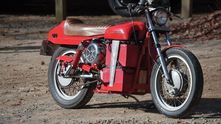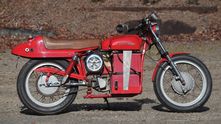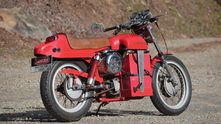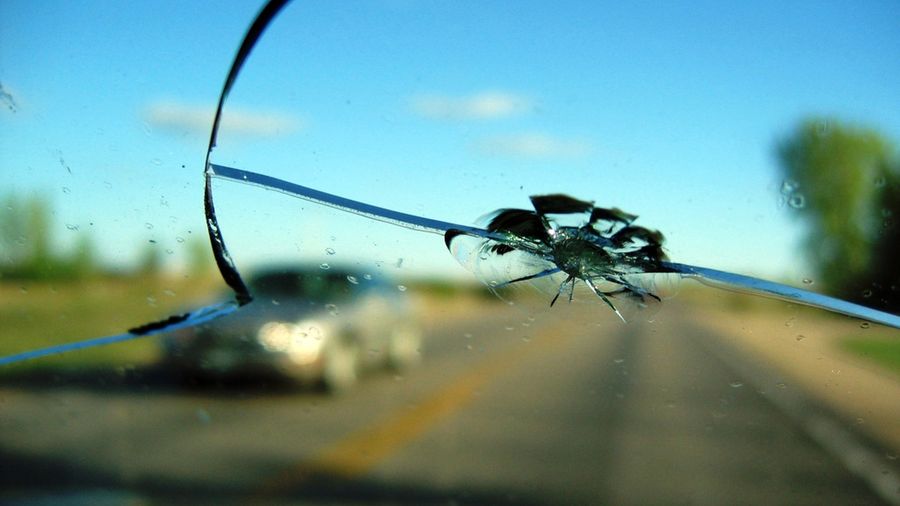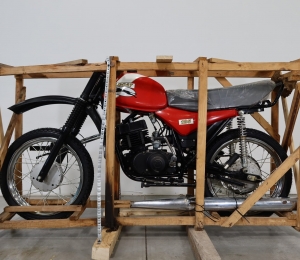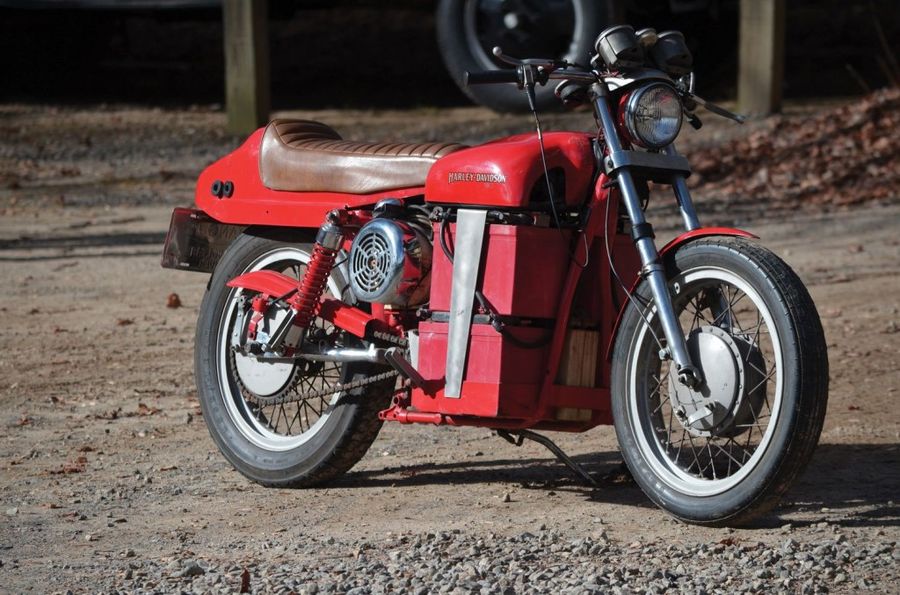
Industrial designer Brooks Stevens may be best known for his automotive designs, but his pen also sketched ideas for bicycles, tricycles and motorcycles. Exactly how much involvement Stevens had with the 1978 Transitron Mk II electric motorcycle remains unclear, but the prototype did spend time in his collection before the designer’s death in 1995. Later this week, the Transitron Mk II prototype will cross the block in Amelia Island, giving bidders a chance to acquire a unique bit of both motorcycle and electric vehicle history.
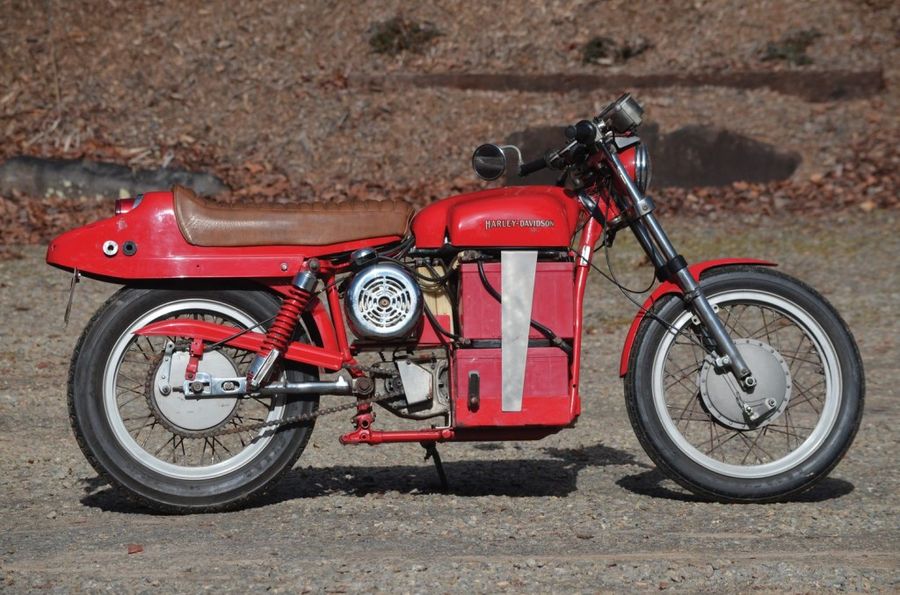
When the Transitron Mk II appeared on the scene in 1978, it was full of innovative ideas. The concept of an electric motorcycle was nothing new, but the Transitron Mk II was far more than just an electric motor connected to a drive wheel; its 24-volt, 95-amp Baldor electric motor was linked via a primary drive belt to a four-speed automatic transmission. This transmission was linked to the rear wheel via a drive chain, and the setup reportedly allowed the Transitron to reach a top speed in the neighborhood of 50 MPH while maintaining a range-friendly electric motor speed of just 2,500 RPM.
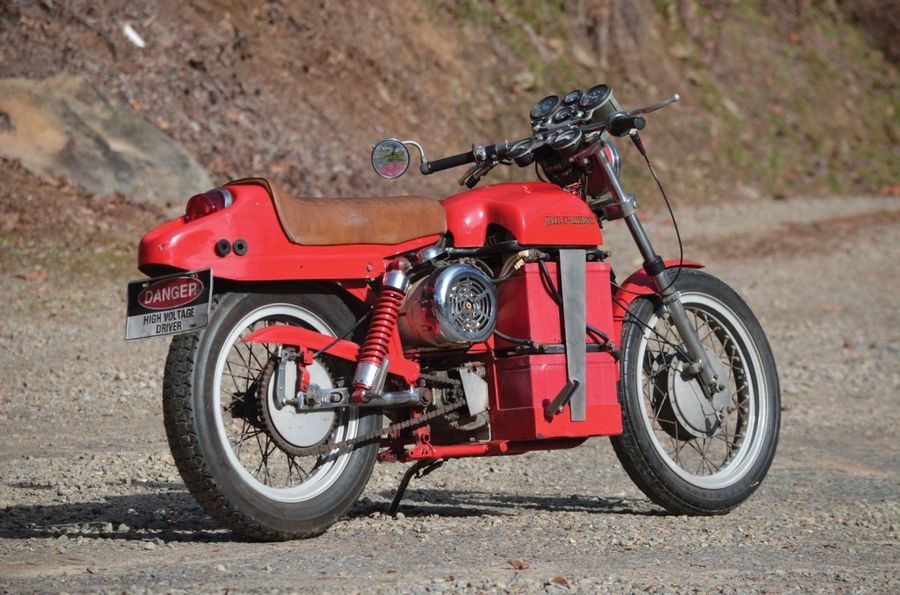
Power came from a series of four deep-cycle lead-acid batteries, which, when fully charged, reportedly provided a run time of up to six hours (though it’s not clear if this is at a sustained motor speed of 2,500 RPM). They also added a significant amount of weight to the Transitron, which tipped the scales at roughly 628 pounds. Weight being the enemy of acceleration, the Mk II gained speed at a somewhat leisurely pace, even with the proprietary four-speed automatic transmission, and period reports claim that a run from 0-30 MPH took between six and seven seconds.
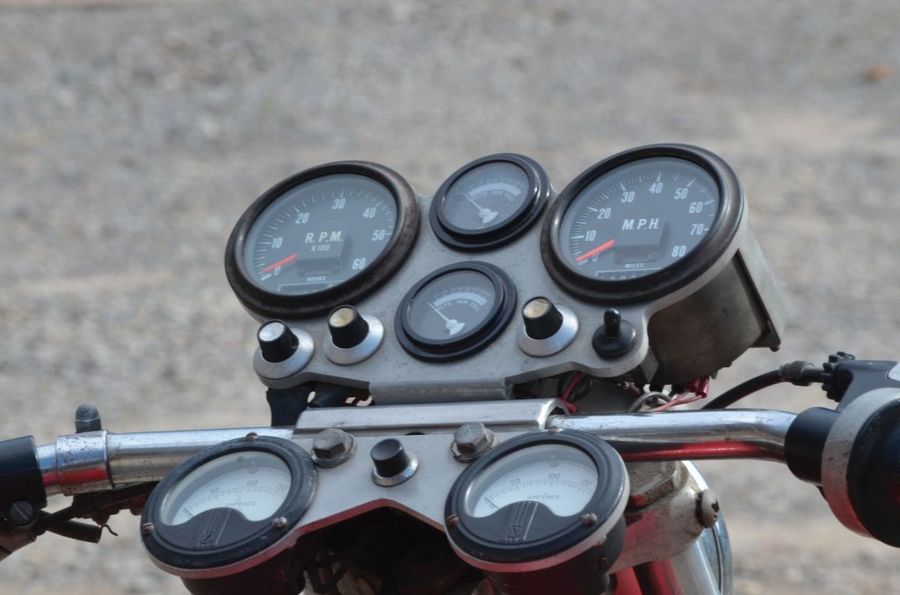
A Harley-Davidson Sportster frame housed the batteries, controller, electric motor and transmission, and much of the bodywork (including a faux “gas tank”) also came from Harley-Davidson’s parts bin. The wheels and drum brakes were Sportster units as well, but that’s where Harley-Davidson’s participation stopped. Although Transitron was actively seeking funding and development partners, Harley Davidson showed no interest in pursuing sponsorship or development of an electric motorcycle. As electric motorcycle forum ElMoto relates, Brooks Stevens showed interest in the Transitron Mk II, and worked with builder Steve Fehr to help test the prototype. While Fehr built the bike in Honolulu, Hawaii, Stevens himself allegedly racked up some 360 miles of on-track testing of the prototype in Wisconsin, and the Transitron Mk II eventually ended up in Stevens’s own transportation museum in Mequon, Wisconsin. Following Stevens’s death in 1995, the Transitron Mk II passed through the hands of a few collectors before ending up at the Wheels Through Time Museum in North Carolina, on loan from its current owner.

Today, many would argue that the electric motorcycle is an idea whose time has come, but that wasn’t the case in 1978. Fehr had difficulty finding investors in Transitron, and it’s not clear if any Mk II models were ever produced (or, for that matter, if Fehr ever recovered the $70,000 he’d spent on the bike’s development). Mike Corbin, who’d achieved an electric motorcycle land speed record in 1973, saw only limited success with his Corbin-Gentry electric motorcycle, launched in 1974, and if that much publicity couldn’t buy sales, what chance did an unknown company like Transitron have? Though never a commercial success, the Mk II does serve as a reminder that the dawn of the second “electric age” isn’t exactly something new, and RM predicts the bike will sell between $25,000 and $35,000.









